第26章 MONEY OR SIMPLE CIRCULATION(7)
Medium of Exchange Karl Marx's A CONTRIBUTION TO THE CRITIQUE OF POLITICAL ECONOMY2.Medium of Exchange When,as a result of the establishing of prices,commodities have acquired the form in which they are able to enter circulation and gold has assumed its function as money,the contradictions latent in the exchange of commodities are both exposed and resolved by circulation.The real exchange of commodities,that is the social metabolic process,constitutes a transformation in which the dual nature of the commodity --commodity as use-value and as exchange-value --manifests itself;but the transformation of the commodity itself is,at the same time,epitomised in certain forms of money.To describe this transformation is to describe circulation.Commodities,as we have seen,constitute fully developed exchange-value only when a world of commodities and consequently a really developed system of division of labour is presupposed;in the same manner circulation presupposes that acts of exchange are taking place everywhere and that they are being continuously renewed.It also presupposes that commodities enter into the process of exchange with a determinate price ,in other words that in the course of exchange they appear to confront one another in a dual form --really as use-values and nominally (in the price)as exchange-values.
The busiest streets of London are crowded with shops whose show cases display all the riches of the world,Indian shawls,American revolvers,Chinese porcelain,Parisian corsets,furs from Russia and spices from the tropics,but all of these worldly things bear odious,white paper labels with Arabic numerals and then laconic symbols £s.d.This is how commodities are presented in circulation.
a.The Metamorphosis of Commodities Closer examination shows that the circulation process comprises two distinct types of circuit.If commodities are denoted by C and money by M,the two circuits may be represented in the following way:C --M --C M --C --M In this section we are solely concerned with the first circuit,that is the one which directly expresses commodity circulation.
The circuit C --M --C may be divided into the movement C --M,the exchange of commodities for money,or sale;the opposite movement M --C,the exchange of money for commodities,or purchase ;and the unity of the two movements C --M --C,exchange of commodities for money so as to exchange money for commodities,in other words,selling in order to purchase .The outcome in which the transaction terminates is C --C,i.e.,exchange of one commodity for another,actual exchange of matter.
C --M --C,when considered from the point of departure of the first commodity,represents its conversion into gold and its reconversion from gold into commodity;that is to say a movement in which at the outset the commodity appears as a particular use-value,then sheds this form of existence and assumes that of exchange-value or universal equivalent --which is entirely distinct from its natural form --finally it sheds this as well and emerges as a real use-value which can serve particular needs.In this last form it drops out of the sphere of circulation and enters that of consumption.Thus to begin with,the whole circuit of C--M --C represents the entire series of metamorphoses through which every individual commodity passes in order to become a direct use-value for its owner.The first metamorphosis takes place in C --M,the first phase of the circuit;the second in M --C,the other phase,and the entire circuit forms the curriculum vitae of the commodity.But the cycle C --M --C represents the complete metamorphosis of an individual commodity only because it is at the same time an aggregate of definite partial metamorphoses of other commodities.For each metamorphosis of the first commodity is its transformation into another commodity and therefore the transformation of the second commodity into the first;hence it is a double transformation which is carried through during a single stage of the cycle.To start with,we shall separately examine each of the two phases of exchange into which the cycle C --M --C is resolved.
C --M or sale :C,the commodity,enters the sphere of circulation not just as a particular use-value,e.g.,a ton of iron,but as a use-value with a definite price,say £317s.101/2d.or an ounce of gold.
The price while on the one hand indicating the amount of labour-time contained in the iron,namely its value,at the same time signifies the pious wish to convert the iron into gold,that is to give the labour-time contained in the iron the form of universal social labour-time.If this transformation fails to take place,then the ton of iron ceases to be not only a commodity but also a product;since it is a commodity only because it is not a use-value for its owner,that is to say his labour is only really labour if it is useful labour for others,and it is useful for him only if it is abstract general labour.It is therefore the task of the iron or of its owner to find that location in the world of commodities where iron attracts gold.